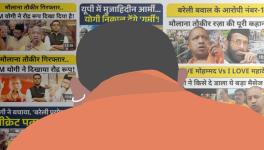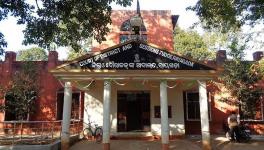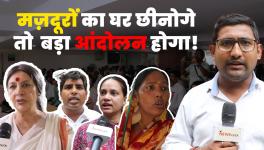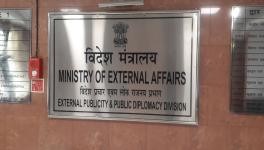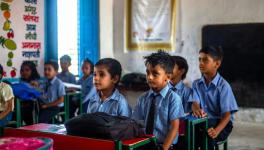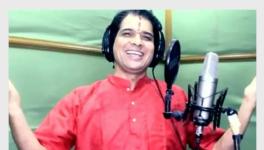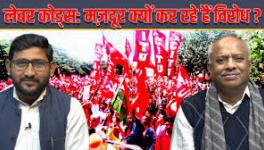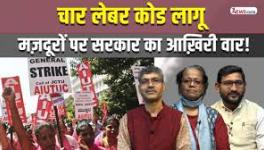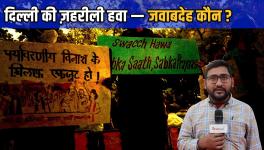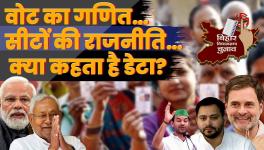UP: Ramayana, Vedic Workshops in Govt Schools Challenged
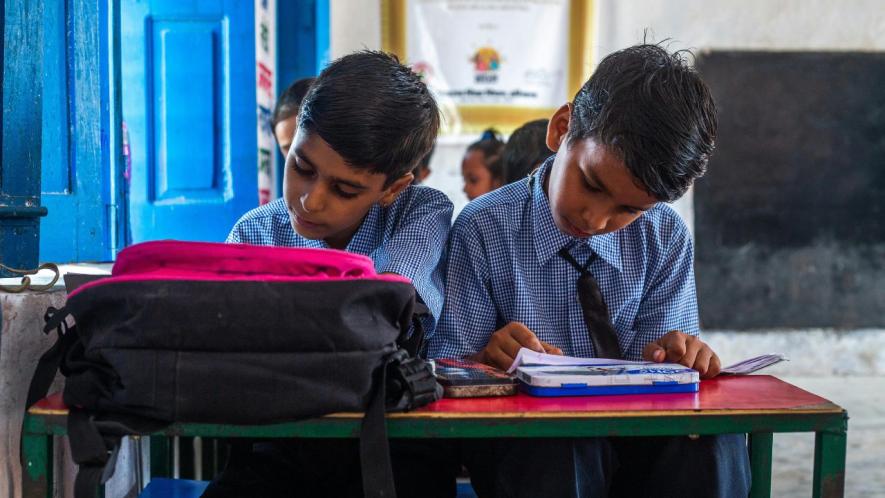
Representational Image. Image Courtesy: Pexels
“No religious instruction shall be provided in any educational institution wholly maintained out of State Funds” unless “established under any endowment or trust which requires that religious instruction shall be imparted in such institution”. (Article 28 of the Indian Constitution)
It has been more than 75 years since the founding fathers (and mothers) of the Constitution took this bold stand when they were shaping the guidelines around which the newly independent country would move forward. A cursory glance at the constitutional debates makes it abundantly clear that a majority of the members – despite their own religious inclination – were clearly of the opinion that schools, whose basic purpose was to open minds of children and not make them a dumping ground of useless information, should never be opened up for any type of religious instruction.
What was important was that they were seeing the perils of poisoning of minds by religious frenzy in this part of the sub-continent, and were keen that the future of independent India should be secured on secular grounds only.
Perhaps it needs emphasising that Article 28 of the Constitution makes it more explicit and does not leave any ambiguity as far its implementation is concerned.
“No person attending any educational institution recognised by the state or receiving aid out of state funds shall be required to take part in any religious instruction that may be imparted in such institution or to attend any religious worship that may be conducted in such institution or in any premises attached thereto unless such person or, if such person is a minor, his guardian has given his consent thereto cultural and educational rights.”
What Does One Mean by Religious Instruction?
The expression religious instruction here has a restricted meaning. It conveys that teaching of customs, ways of worships, practices or rituals cannot be allowed in educational institutions wholly maintained out of State funds.
Much water has flown down the Ganges, the Jamuna and all rivers of the country and it appears that slowly, but not so silently, attempts are on to water down the provisions of this Article and facilitating religious instruction in government schools through the back door.
The manner in which Yogi Adityanath-led Bharatiya Janata Party (BJP) government in Uttar Pradesh has suddenly decided to hold summer workshops on the Ramayana and the Vedas in government schools across the state, without any broader consultation with the stakeholders involved in this endeavour, is symptomatic of the brazen attitude of the government. We are told that these workshops will be organised under the aegis of the International Ramayana and Vedic Research Institute, Ayodhya, and will include activities, like Ramlila, Ramcharitmanas recitation, Vedic chanting, painting, and mask-making.
As expected, this retrograde move by the Yogi government has generated anger among the broad masses as well as concerned citizens, who have demanded that this move be immediately rescinded.
Broadly they have three big objections:
- One, it clearly goes against the provisions of Article 28 of the Constitution and thus is a violation of constitutional principles and values.
- Two, in a state where people of different faiths have been living together for centuries together - giving primacy to the religion of the majority - will be an act of overt discrimination against all religious minorities, including those handful of students who are atheists.
- Three, such workshops will reinforce the deep-rooted gender and caste discrimination in these scriptures.
The resistance to this move has taken two forms. On the one hand, concerned citizens or political leaders have condemned these attempts as a violation of the Constitution. Leaders like Chandrashekhar ‘Ravan’ of the Bhim Army, also a Lok Sabha MP, has even suggested that if at all the government wants to organise workshops, they should be focused on the Constitution.
Secondly, courts have been approached at various levels with pleas that they condemn such moves and help strengthen the struggle for constitutional values and principles.
One such petition is not only aimed at “[s]afeguarding constitutional values but also at ensuring that our education system remains inclusive, secular, and scientific”. It demands quashing of the orders dated May 5 and May 8, 2025, and seeks following relief.
• Directing authorities to refrain from promoting specific religious texts in schools.
• Ensuring that education remains inclusive, secular, and scientific.
• Stop this act of overt discrimination which sanctifies and legitimises gender and caste discrimination.
The petition also explains why this order of the Yogi government is unconstitutional and harmful to society for the following reasons:
One, such an order violates secularism. Everybody knows that the Constitution recognises secularism as a fundamental feature (S.R. Bommai vs. Union of India, 1994). Mandating Ramcharitmanas and Vedas, which are Hindu religious texts, in public schools promotes a specific religion. This violates Article 28(1) of the Constitution, which prohibits religious instruction in State-run schools.
In Aruna Roy vs.Union of India (2002), the Supreme Court clarified that while comparative study of religions in a secular context is permissible, promoting a single religion’s text is unconstitutional.
Two, such orders promote caste and gender discrimination:
Certain verses in Ramcharitmanas, such as “Dhol, gawar, shudra, pashu, nari, ye sab tadan ke adhikari” (Sunderkand, 58.3) and “Nari swatantra na bhave, pati bina dukh pave” (Ayodhyakand,
60), demean Shudras and women. These verses contradict Article 14 (equality before the law), Article 15 (prohibition of discrimination), and Article 17 (abolition of untouchability) of the Constitution. Promoting such texts in schools not only violates the rights of Scheduled Castes and women but also undermines social equality.
Three, it facilitates attacks on scientific temper: Article 51A(h) of the Constitution imposes a duty on every citizen to promote scientific temper, humanism, and the spirit of inquiry and reform. Prioritising religious and mythological texts, such as the Ramayana and the Vedas weakens rational thinking and scientific inquiry.
In Santosh Kumar vs. Secretary, Ministry of Human Resource Development (1994), the Supreme Court stated that education must promote a scientific and rational outlook, not religious superstition.
Four, promote violation of minority rights: Articles 29 and 30 grant minorities the right to preserve their culture and educational autonomy. Mandating Ramcharitmanas imposes a Hindu-centric culture on students from Muslim, Christian, Sikh, and other minority communities, violating their cultural and religious rights (St. Xavier’s College v. State of Gujarat, 1974).
Five, administrative impropriety. This impropriety can be understood in the way an institute under the culture department issued orders directly to officials of the education department, which is a violation of administrative protocols.
The way the Supreme Court emphasised in the U.P Gangadharan vs. State of Kerala (2006)case that administrative actions must follow established protocols. Since the said order has been issued without consultation with the education department, it is illegal and arbitrary.
It is also no small matter that the move facilitates misuse of public funds. Article 27 prohibits the use of taxpayer money to promote any particular religion. The use of public funds for these workshops, such as for teacher training and materials, promotes Hindu religious values, which is against the ruling in Prafull Goradia vs. Union of India (2011) and also displays lack of constitutional morality. We should not forget that in the case of Indian Young Lawyers Association vs. State of Kerala (2018), the Supreme Court defined constitutional morality as adherence to principles of equality, liberty, and justice. Promoting caste and gender hierarchies of Ramcharitmanas contradicts these values.
There is nothing surprising about this move by the Yogi government which, as the petition well explains, is a clear “violation of Constitution”. Remember, with the ascent of BJP at the Centre (in 2014), many states opened up various ways and means in which a particular religion -- namely Hindu religion -- is overtly or covertly promoted.
Take this news item where neighbouring Madhya Pradesh has already introduced Hindu religious texts as part of the curriculum of State government schools. A few years ago, the then BJP government in Rajasthan had come under the scanner of civil liberty activists and educationists for its controversial move to bring Saints-Mahatmas in government schools. It is now history how the Haryana government had decided to include the Bhagwad Gita in the school curriculum, merely a year after Prime Minister Narendra Modi brought his party, the BJP, to power at the Centre.
Read Also: The Unending Discomfort of RSS With the Constitution
Such moves, which seem to violate constitutional principles and values, are, in fact, a reinforcement of Rashtriya Swayamsevak Sangh or RSS-BJP’s tremendous discomfort with the Constitution itself. It is now history when the Constituent Assembly adopted the draft of the Constitution in November 1949, within three days after its adoption, an editorial in the Organiser (RSS mouthpiece) criticised it in no uncertain terms and praised Manusmriti: [Excerpts from an Editorial on Constitution, Organiser, November 30, 1949). The Hindutva Supremacist movement was praising Manusmriti and counterposing it with the newly adopted Constitution. Another stalwart of the Hindutva movement, Vinayak Damodar Savarkar, similarly lambasted the draft of the Constitution and emphasised that Manusmriti should have been made the basis of Indian laws.
What is worth emphasising here is that there are various judgements/interventions of the courts at the highest level itself which have been categorical in cautioning the executive about bringing in religious instructions in schools.
Take the case of a petition filed by a lawyer Vinayak Shah from Jabalpur, Madhya Pradesh, in the Supreme Court. It has challenged the recitation of Sanskrit prayers in Kendriya Vidyalayas. According to him, doing so effectively amounts to “religious instructions for schools funded by the government”. This, Shah has argued, violates Article 28(3) of the Constitution, which says that nobody attending educational institutions recognised by the State or those which receive aid out of State funds, shall be required to take part in any religious instruction or religious worship in institutions or premises attached to them—unless they are minors and their guardian has consented to it.
This petition revolves around three issues:
One, it is not right to compel children of all religions, including those from families that are atheist and agnostic, to sing Hindu prayers.
Two, considering the constitutional prohibition on students being made to take religious instruction in government-funded schools, the 1,100 Kendriya Vidyalayas must not insist on holding such prayer meetings every day.
Three, prayer songs obstruct the development of a scientific temper in students, which in turn Violates Article 51A(h) of the Constitution that says that it shall be the duty of every citizen to develop a scientific temper, humanism and the spirit of inquiry and reform.
Considering the seminal importance of this issue, a bench led by Justice Rohinton Nariman and Justice Vineet Saran have referred the matter to the Chief Justice of India to be examined by a Constitutional Bench comprising at least five judges.
One can also look at a case from Maharashtra where Sanjay Salve, a teacher at a Nashik school had waged a lonely struggle against the management of a school that had refused to give him a raise for he had refused to fold hands during school prayers. Salve approached the courts asking that his right to freedom of expression be protected. He said that he cannot be forced to stand with folded hands during prayers and that singing of prayers amounts to imparting religious education, not permissible under Article 28(1) of the Constitution.
Read Also: There is no God And You Can Say so
A two-member bench of the Bombay High Court had ruled in his favour, saying that “forcing a teacher to do so [fold hands during prayers] will be a violation of the fundamental rights.
One can also refer to how the National Council of Educational Research and Training (NCERT), tasked to assist and advise Central and state governments over school education, shared a manual on sensitising schools to the needs of minority students.
A point worth contemplation in view of the Yogi government’s order is that whether educational institutions can compel students to have religious instruction under the name of moral education, as many such orders are couched in the language of teaching “value” to the students.
Perhaps the draft committee of the Constitution, chaired by B R Ambedkar, was aware of this possibility and had made it explicit that any such act would be a violation of Article 19, which gives the right to freedom of expression to every citizen and its violation would be, in fact, a violation of Article 25(1). It says:
“Subject to public order, morality and health and to the other provisions of this Part, all persons are equally entitled to freedom of conscience and the right to freely profess, practice and propagate religion.”
Looking back, one can see the progressive nature of these various articles in the Constitution, instituted by a draft committee -- majority of whom were believers and hardly a few who were declared atheists -- who were keen that no matter what it takes, schools administered by State funds should never be allowed to give religious instruction in any form. May be after witnessing the Partition of the country, where religion was used as a basis of nationhood by a significant section of the population and which witnessed tremendous bloodletting, they could foresee the importance of keeping religion restricted to one’s private domain.
Whether Yogi government will be allowed to have its way and thus further facilitate dilution of Constitutional principles - with its controversial order of organising Ramayana and Vedic workshops in government schools of UP -- is the key question before us today!
Either way, the battle to save the Constitution will continue unabated.
The writer is a senior independent journalist. The views are personal.
Get the latest reports & analysis with people's perspective on Protests, movements & deep analytical videos, discussions of the current affairs in your Telegram app. Subscribe to NewsClick's Telegram channel & get Real-Time updates on stories, as they get published on our website.










